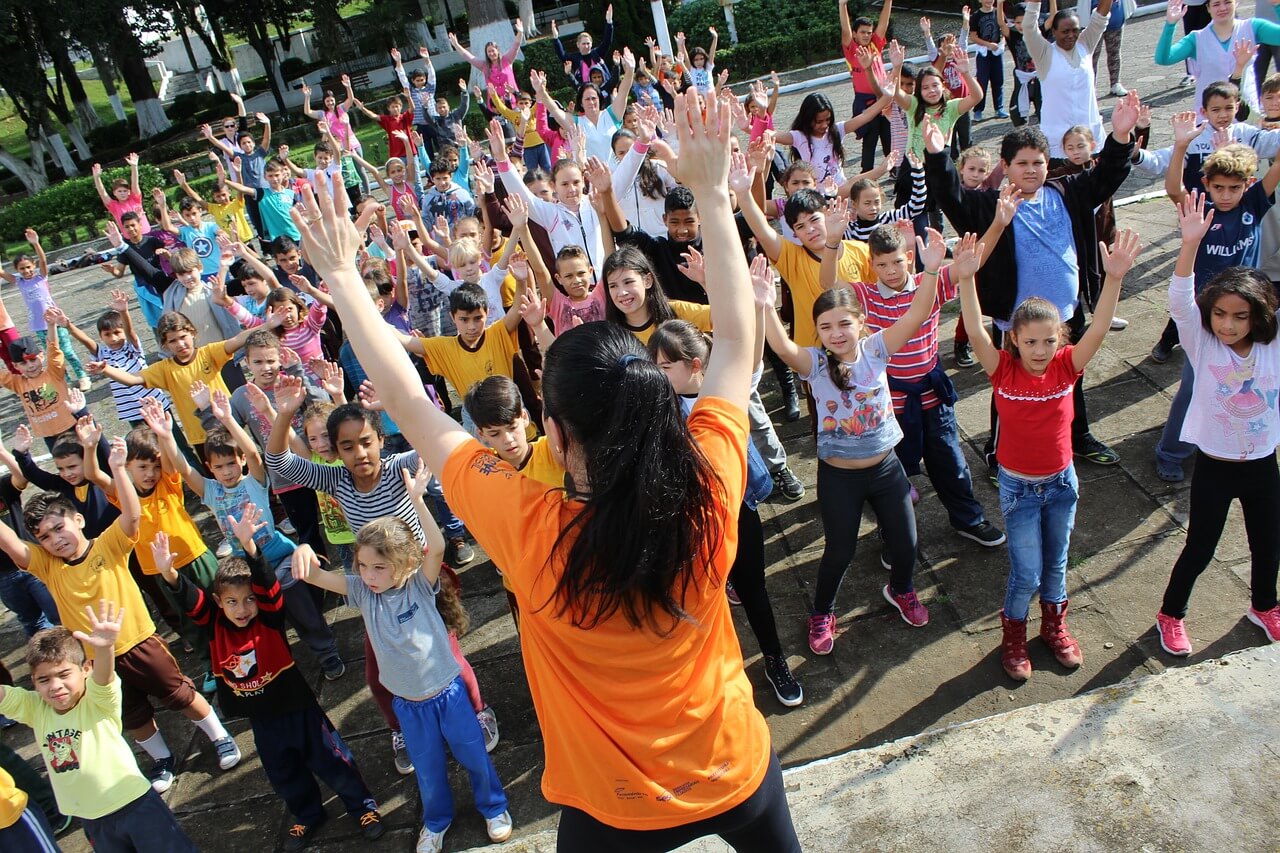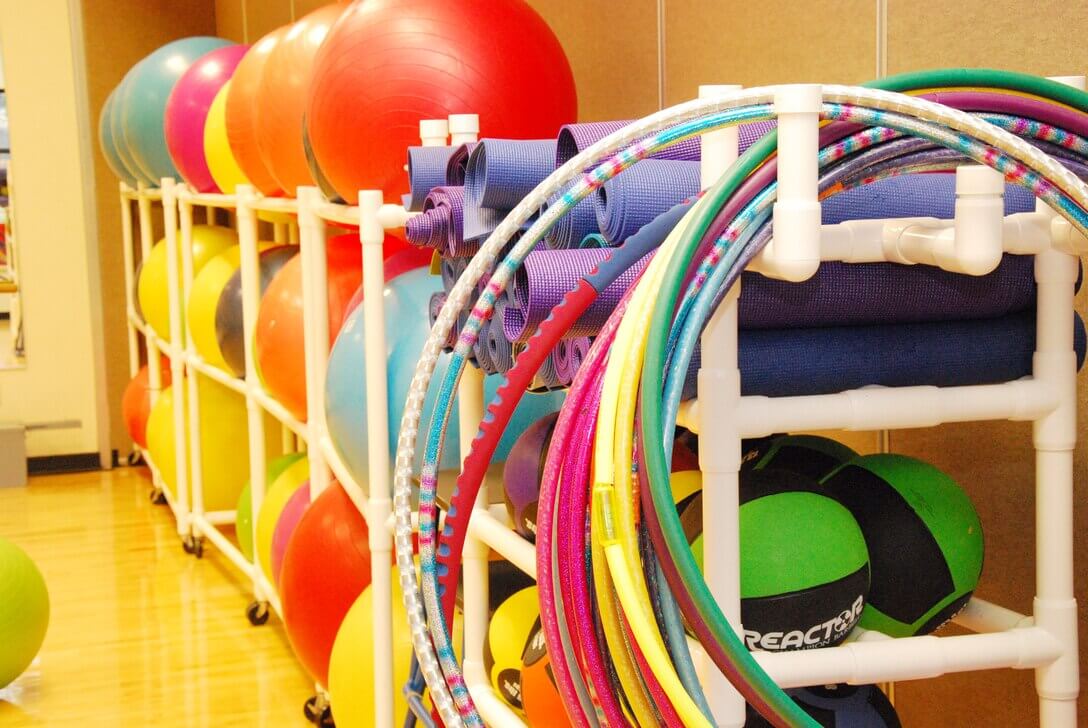
Physical Education classes have gotten bigger over the course of the pandemic. The powers that be knowingly placed too many kids within too small an area. Wildly, there is this underlying assumption that whatever is asked of PE and the PE teacher will be OK. Though COVID has highlighted the vast chasm between PE and the rest of campus, the many effects of the virus will not be the emphasis of this article. Instead, I will attempt to cast a light on the larger, more long-term tendency that is crippling Physical Education — the fact that anyone, at any time is haphazardly added to the class roster. There is no cohesion of who, which means there is no cohesion of what.
Classes are filled by available space, and there is ALWAYS space available in PE
Mixing a bunch of students from a bunch of different backgrounds and needs and skills and personalities and communication styles is a socially risky endeavor. It forces the teacher, handed such a group, to create pockets of safety. It means separations and groupings and ‘special’ assignments, while also forging some semblance of whole class homogeny. Social freedom and social pressure are manipulated to try and provoke maximal participation.
Participating is typically defined as ‘some level of activity, and activity is an observable behavior. However, there is an assumption that participation is easy and natural because these are young people. Youth equals energy which equals playfulness. This is the same assumption the administration has when they pump the gym full of students. During an open gym, with no strings attached (it’s OK to sit and simply be and actually do what you want to do), the vast majority of students are perfectly content staring at their phones. This is their preference of playing and interacting — disappearing through the sameness of seen action, but individually having control over their attention and level of stimulation.
Any act of doing in a public setting carries with it an inherent risk. The perceived level of risk is determined by the environment, skill, and experience of the person placed within it. When familiarity = safety and the most comfortable and familiar has become not doing, a physical education class based on doing creates all kinds of stressors and conflicts.

Social Threat
Being seen illuminates. If you are not good at a game, your flaws and weaknesses come to light. Your teammates get mad at you and speak/ react in frustration and/or disappointment. When there is such a large swath in skill, experience, and ability, there is a very real fear of not being good enough, and everybody knowing it. Many would rather shut down and not play than endure that kind of humiliation (be it actual or imagined; reality is internalized).
Mediating this: giving students choice between practice and game sides divided by a curtain, green-lighting unseen independent work during class time, peer grading.
Complications: number of students, lack of available space, amount of time and energy required to offer options, trust, ownership, and personal responsibility
Mental Anxiety
All of the internal pressures affect esteem and performance. How the students see themselves continually reflected and reinforced by the perception that they are not good enough and do not have the opportunity or structure to get good; improvement means little if you are still far behind, still making mistakes, and still thought of as less then. A side effect of being watched for those with skill and confidence is it improves performance. For those without, it diminishes.
Mediating this: talking about the anxiety/ bringing it into the open, assigning non-performance tasks/ observations, independent assignments in a different space
Complications: only one teacher and several spaces of need, students being out of sight, must be willing to look past physical and probe into unseen mental-social-emotional
Physical Lethargy
I have been told by many, many students, that outside of PE, they “don’t do anything.” They sit in their rooms and play video games or observe the world through their phones. Layer on a year plus of distance learning, and they never had to leave their safe place. A habit of lethargy and not doing is hard to break. Momentum is not in favor of action and activity.
Specifically, there has been a definitive drop in what the majority of kids are able to do. Quite a few have trouble climbing in and out of closed bleachers. Their vision and spatial awareness have become remarkably poor. There have been much higher incidences of accidents and injuries in PE, and the injuries are becoming much more severe (I have had a broken arm AND a broken leg in class this year). It is less than we are building upon an accepted standard of physical capacities and more that we are having to build them from zero (or in some cases, less than zero).
Mediating this: addressing through direct instruction/ units of understanding, starting at a dropped baseline, attentional reinforcement/feedback
Complications: having to ‘fight’ prior expectations of PE, the basics are boring, losing the top end of performers in large group instruction, harder to teach/ develop engaging challenges for than the sports and games they are familiar with
Too many students in too small a space make any environment dangerous. Giving a person a singular charge to take care of this space and everyone in it is an incredible task. This becomes incredibly apparent when the PE teacher is out and other teachers/people are asked to sub. The immense attentional and energy demands that are required to steer such a group in such conditions — to ask each to acknowledge and accept the risk of play — is a monumental undertaking. This Petri dish of human behavior gives us tremendous insight on social dynamics and group culture: a relational examination that the educational system must take into higher account.





Thx Chris for highlighting the many problems associated with exceedingly large classes in our school programs. However, I would add to this another problem that is in essence self-inflicted under the euphemism of “team teaching.” Too many times in my almost four decades of being on school campuses, teacher choose to put two classes together. Classes now can have as many as 60 to 80 students in them. At high schools this is especially astounding many of the newer HS campuses have expansive spaces dedicated specifically for classes/physical activity. In a recent analysis in four school districts in a metropolitan area inI the southwest the number of dedicated activity spaces ranged from 8 to as many as 20.
(see Yu, H., Mulhearn, S. C., van der Mars, H., Griffo, J., & Kulinna, P. (2020). Off-hours facility use in public high schools: Physical activity potential vs. reality. Research Quarterly for Exercise & Sport. doi: https://doi.org/10.1080/02701367.2020.1844128 [ahead of print])
Let’s not continue to create more risks than absolutely necessary….
Curious how these spaces are partitioned, and what constitutes as ‘supervision’. Physical Activity classes are taking the place of PE in many instances, with kids just given ‘stuff’ and assuming they can play (most cannot). These numbers are outrageous… what teacher can actually teach under such conditions?
Hi Hans,
My colleague suggested I read this important article and I saw your comment!
I’m sending you my best!
YEA! Very nicely done! Write on!
THOM
thomckenzie.com
Thanks Thom
Hi Christine,
You made an excellent observation in your article. I taught physical education and dance at a large high school for over 25 years (retired in Sept. of 2021). Despite continuing advocacy for our programs and administrative support in our building, the issues you brought up continued to get worse in our district every year. Many of us who continued to teach standards based lessons, fundamental movements, fitness skills, sports skills, and social skills, all while attending to our students physical and mental wellness have suffered the consequences of these practices with the decline of our own well being. The importance of quality physical education and dance education must be understood by students, parents, counselors, teachers, future teachers, and administrators. Your article lays out a compelling and thorough explanation. The challenge continues to be finding solutions. Thank you. P.S. Hi Hans! I hope you are doing well and are continuing your important work!! Best wishes to all.
Thank you for sharing your validating experience, Nanci. Congrats on 25 years of service